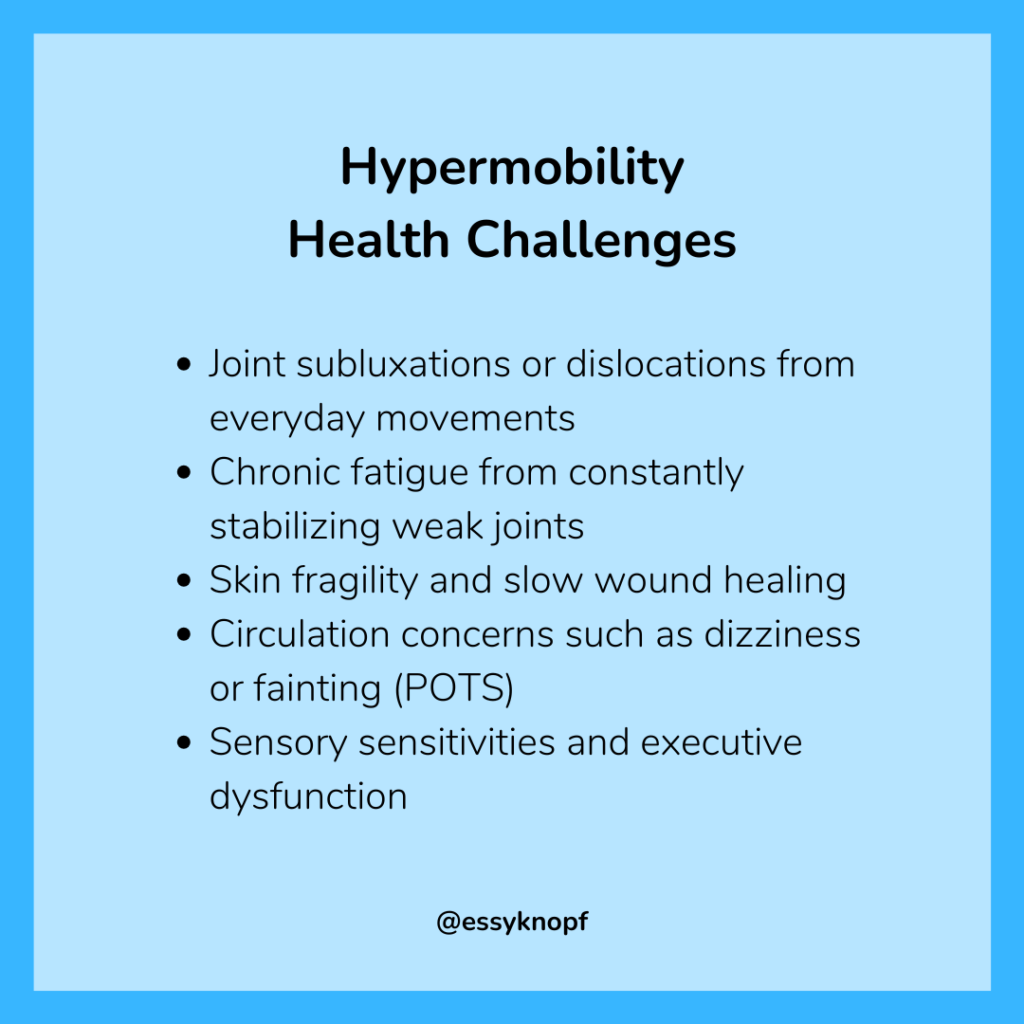My body hates me! Living with hypermobile autism and ADHD
Many autistics and ADHDers experience more than just neurodivergence. For some, their bodies seem to betray them—resulting in pain, instability, and exhaustion. One such hidden struggle is hypermobile spectrum disorders (HSD) and Ehlers-Danlos syndrome (EDS), conditions that affect connective tissue and, consequently, almost every system in the body.
For those with hypermobility, something as simple as taking off a shirt can become a painful ordeal. Joints can sublux (partially dislocate) or fully dislocate with minimal effort, leading to intense pain and long recovery periods. Hypermobile individuals may also experience fragile skin, slow wound healing, chronic fatigue, and circulation issues, such as postural orthostatic tachycardia syndrome (POTS).
The Hypermobile Diagnostic Struggle
Despite the serious implications of HSD and EDS, diagnosis is often a long and frustrating journey. Many medical professionals misattribute symptoms to anxiety, fibromyalgia, or simply growing pains, leading to years of confusion and untreated suffering. Since the medical field is still catching up with research on hypermobility, many doctors are unaware of the condition’s full impact, especially in neurodivergents (NDs).
Like autism and ADHD, hypermobility disorders exist on a spectrum. Some people may experience mild joint instability, while others face life-altering pain and frequent dislocations. The lack of general awareness means that many NDs are left undiagnosed, struggling to piece together their symptoms.
The Neurodivergence Connection
Research has begun to uncover an interesting overlap between neurodivergence and hypermobility disorders. Many autistics and ADHDers report hypermobile joints, fragile skin, and chronic pain. Scientists suspect that whatever genetic factors contribute to autism and ADHD may also play a role in connective tissue disorders.
This link adds another layer of difficulty for NDs already navigating a world designed for neurotypicals (NTs). When combined with executive dysfunction, sensory sensitivities, and motor coordination challenges, hypermobility can make daily life feel like an uphill battle.
The Daily Challenges of Hypermobility
People with hypermobility often experience:
- Frequent joint dislocations and subluxations – Even basic movements can lead to sudden, sharp pain.
- Chronic fatigue – The body has to work extra hard to stabilize weak joints, leading to exhaustion.
- Slow wound healing and fragile skin – A simple scrape can take weeks to heal.
- Digestive issues – Many individuals with HSD/EDS develop irritable bowel syndrome (IBS) and food sensitivities.
- Dysautonomia and POTS – Blood pooling in the legs causes dizziness and fainting when standing.
Strategies for Managing Hypermobile Autism & ADHD
Although hypermobility presents unique challenges, there are ways to manage symptoms and improve quality of life:
- Physical Therapy – Strengthening muscles around weak joints can reduce dislocations and long-term damage.
- Joint Supports & Braces – Using compression sleeves, braces, and KT tape can help stabilize joints.
- Low-Impact Exercise – Activities like swimming, Pilates, or yoga (with modifications) help maintain strength without excessive strain.
- Dietary Adjustments – Following a low-histamine or low-FODMAP diet may help manage digestive issues related to HSD.
- Hydration & Salt Intake – Increasing both can help manage POTS symptoms.
- Medication & Supplements – Antihistamines, pain management medications, and specific supplements can help alleviate symptoms.
- Pacing & Spoon Theory – Learning to conserve energy throughout the day can prevent excessive fatigue and flare-ups.

The Importance of Recognition and Advocacy
For NDs with hypermobility, receiving a proper diagnosis can be life-changing. It provides validation and opens the door to appropriate accommodations and treatments. Advocating for oneself in the medical system is essential, but it can also be exhausting. Seeking out knowledgeable specialists, such as a rheumatologist or geneticist, can make all the difference.
There’s still much to learn about the relationship between autism, ADHD, and hypermobility, but awareness is growing. If you suspect you might have HSD or EDS, researching resources like The Ehlers-Danlos Society and connecting with online communities can be incredibly helpful.
Final Thoughts
Living with hypermobile autism and ADHD comes with unique struggles, but knowledge and the right strategies can make a significant impact. If your body feels like it’s working against you, know that there are ways to improve your daily life. Seeking support and making small but meaningful adjustments can lead to greater stability, less pain, and a better overall quality of life.
Do you struggle with connective tissue-like symptoms? Sound off in the comments!

Essy Knopf is a therapist who likes to explore what it means to be neurodivergent and queer. Subscribe to get all new posts sent directly to your inbox.
© 2025 Ehsan "Essy" Knopf. Any views or opinions represented in this blog are personal and belong solely to the blog owner and do not represent those of people, institutions or organizations that the owner may or may not be associated with in professional or personal capacity, unless explicitly stated. All content found on the EssyKnopf.com website and affiliated social media accounts were created for informational purposes only and should not be treated as a substitute for the advice of qualified medical or mental health professionals. Always follow the advice of your designated provider.


